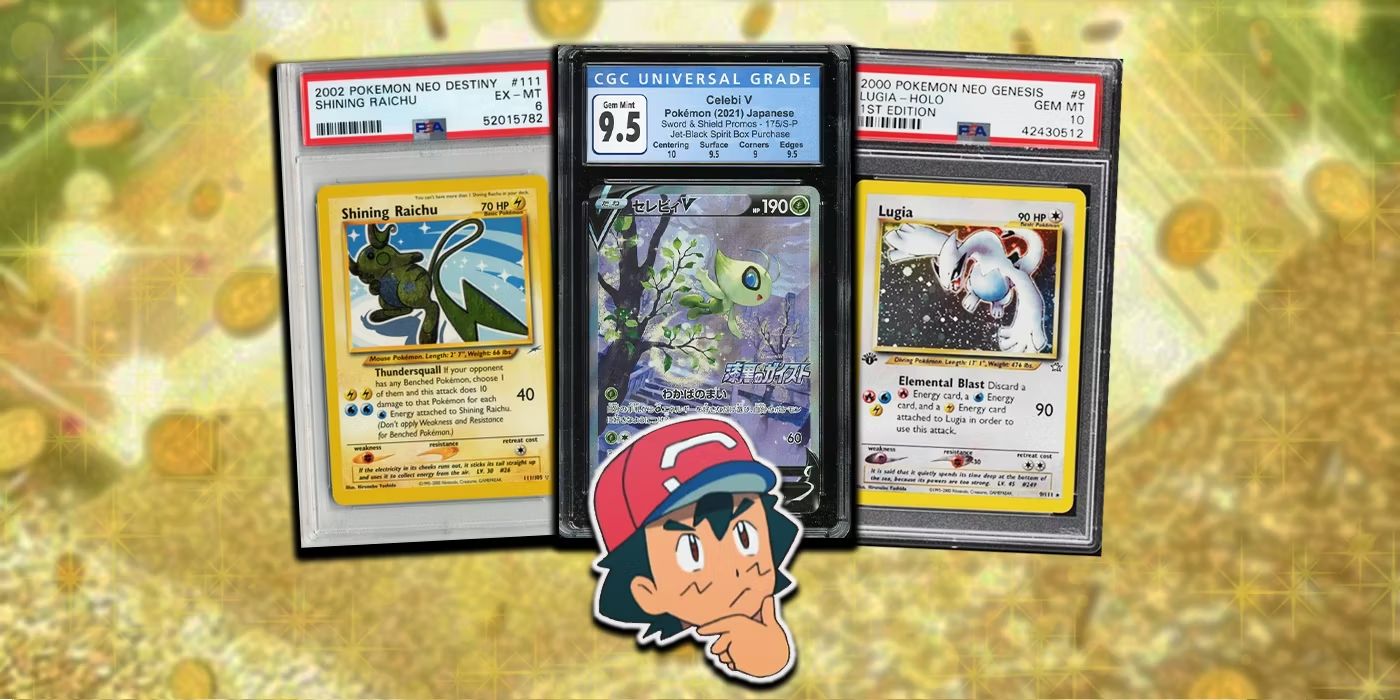Professional Sports Authenticator's (PSA) gradings can make or break card sales for collectors in the Pokémon Trading Card Game scene. The difference in value between a PSA graded 10 and 9 Pokémon card can be astronomical, with a holographic first edition Charizard's price ranging from $375,000 to $20,000 between the two gradings. Despite such a difference between higher PSA gradings, lower graded cards can still be valuable.
That lower graded cards can still earn Pokémon card collectors money makes sense considering how the PSA grades cards. PSA gradings from to 6 to 10 are all considered mint condition (to higher or lesser degrees), and the characteristics distinguishing them are few in number; only slight deterioration in card gloss, enamel, and corners differentiate a PSA 6 from a PSA 10. Even a card with a grading of 2 is considered good, with 1.5 and 1 being the only PSA gradings considered bad or mediocre. This means that seemingly worthless lower-graded Pokémon cards can still be in good or even mint condition according to the PSA's standards, which in turn means they could be considered valuable by collectors looking to purchase their favorite cards.
The value of lower graded Pokémon cards is reflected in the PSA's Price Guide and Card Facts pages. Where the difference in value between a PSA 10 and 9 Pokémon card can be steep like in the earlier example of Charizard, the PSA Price Guide pages shows that the difference between all gradings beneath 9 are much more gradual. That being said, the specifics of a Pokémon card play a significant impact on whether it retains any valuable at lower PSA gradings - or even higher ones.
When Lower Graded Pokémon Cards Are Valuable (& When They Are Not)
Since the value difference between lower PSA gradings is less than that of higher PSA gradings, certain Pokémon cards can be worth a lot of money, sometimes hundreds or even thousands of dollars at lower gradings. The most obvious example of this is the previously mentioned First Edtion Holo-Charizard. While the PSA estimates this card graded at 10 is worth $375,000, its Card Facts page shows that even at PSA 1, this card is regularly being sold for over $2,600. While this is less than 10% of a PSA 9 1st Edition Holo-Charizard, this price drop-off is much better than the 86% value drop-off between PSA 10 and PSA 9 versions of the same card. Since 1st Edition Holo-Charizard is the most valuable card in the Pokémon TCG, a better example for the decrease in value diminishment between lower PSA gradings is another Base Set Pokémon card like Holo-Alakazam. Even as a non-1st Edition card, a PSA 1 Holo-Alakazam's most recent sale was for $95.08, according to PSA Card Facts.
Still, Base Set Holo-Alakazam is an older card with limited prints, meaning there are less in circulation. In comparison, newer cards will almost always be less valuable than Base Set cards because there are so many available. The Pokémon Company has not only increased the production of Pokémon cards in 2021 but has also increased the number of cards per set in general. This means newer, sought-after cards like V-MAX Charizard from Pokémon Darkness Ablaze can go for under $30 at PSA 9 and lower, which can be less than what it cost to have it graded.
Thus, lower graded Pokémon cards can be valuable. The card just has to already be extremely valuable at higher PSA gradings due to high demand and limited supply. While this may be upsetting for Pokémon TCG collectors who pulled Secret Rares from Astral Radiance this year, it is ultimately good news for older fans of the Pokémon TCG who still have their First Edition Base Set cards from childhood (even if they are in bad condition).
Source: PSA Card Facts (2), PSA Price Guide


